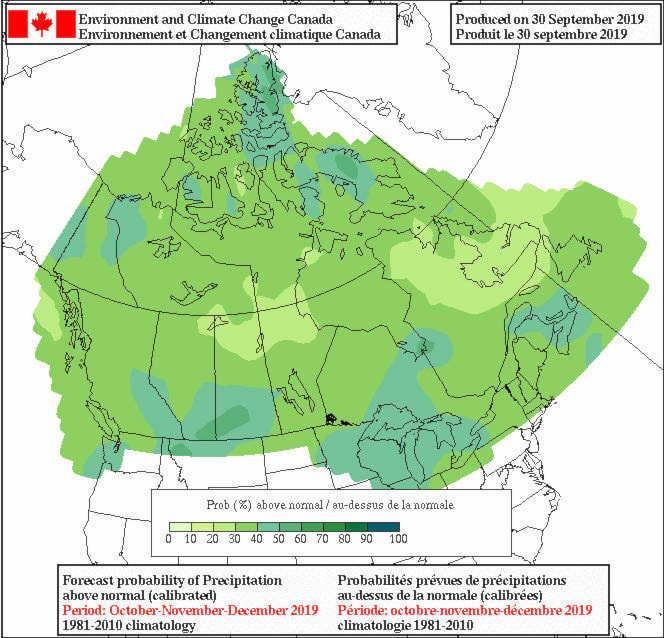The cool and wet summer disappointed some Burns Lake residents and relieved others because it kept the wildfires away, but it wasn’t necessarily unusual.
READ MORE: Wet summer dampens wildfire risks
From June to August there was 130.3 millimetres of precipitation, slightly down from the normal level of 137.3 mm for that period, as Bobby Sekhon, a meteorologist with Environment Canada told Lakes District News.
“It was 95 per cent of the normal precipitation level. May was very dry and June was dry as well and then the wetter season kicked in for July in much of Interior B.C,” Sekhon said.
In June, 38.5 mm of rain fell which is drier than the average of 51.2 mm.
But the 71.5 mm of rain that fell in July was much wetter than the average of 43.3 mm.
Conditions became drier in August when there was 20.3 mm of precipitation, less than half of the average of 42.8 mm.
The relative dryness lasted into September, when 26.2 mm of rain fell, down from the average of 41.4 mm.
It was a different story further south in September, where parts of the Lower Mainland and as far north as Williams Lake and Quesnel received more than double their averages for rain.
RELATED: B.C. records double amount of average rainfall in September
The numbers confirm that the summer was cooler than normal as well. The average daily mean for Burns Lake summers is 13.3 C and this year it was 12.9 C.
This year contrasted sharply with the last two years, when there was only 76 mm of precipitation in 2018 and 78.9 mm in 2017.
LOOK BACK: Burns Lake’s 2018 summer seventh driest on record
The lack of rain made last year the seventh driest summer on record. August of 2018 was the second driest August on record.
It was unclear how conditions will unfold over the rest of the year because there has been no weather pattern in this region to go off of, Sekhon explained.
“When we have El Niño and La Niña years we can tie that to forecasts. But this year it’s neutral with El Niño and La Niña. It makes it harder to determine if we’ll have a colder fall or winter. But we know there is some chance of a warmer than normal fall or winter.”
Blair McBride
Multimedia reporter
Send Blair an email
Like Lakes District News on Facebook
